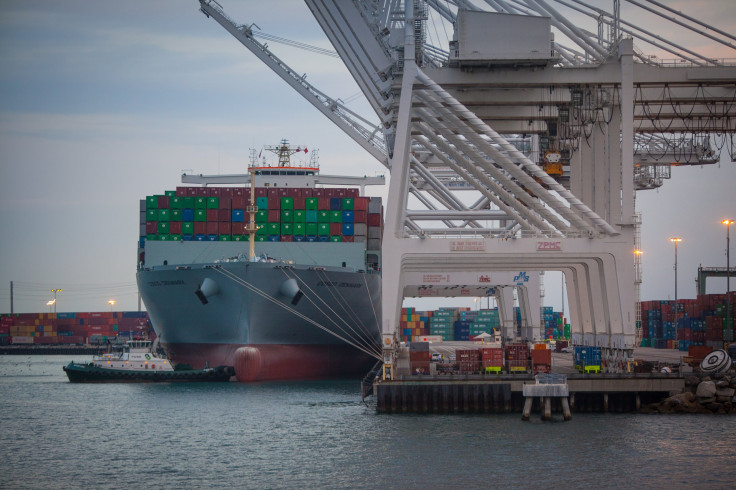West Coast Ports Labor Dispute: Long Beach Port CEO Says By Weekend There Could Be 40 Ships Waiting To Unload

Idling off the coast of Southern California right now could be the world’s most expensive traffic jam. Container ships filled with Asian-made appliances, electronics, auto parts and other goods are queuing up amid an ongoing labor dispute between longshoremen and ship owners.
A slowdown in the off-loading of cargo worsened this week after the Pacific Maritime Association (PMA) – which represents cargo carriers, terminal operators and stevedores who work from the country’s West Coast ports – announced a suspension of vessel operations on Thursday, Saturday, Sunday and Monday.
The announcement came after a two-day work stoppage last weekend. The International Longshore and Warehouse Union (ILWU) claims the employer-mandated stoppage was a tactic to force it into a new labor contract that’s been in negotiations since last May.
“We went from 16 ships out there to 35” because of last weekend’s work stoppage, Jon Slangerup, CEO of the Port of Long Beach, told International Business Times. “And this week we worked the number down to about 14. Now this morning there are 26 ships out there and it will be 35 or 40 by the weekend. Usually there are just two to five ships scheduled to find a berth, and they move quickly.”
The backlog is a high-priced situation for shippers.
“An idling container ship will cost anywhere between $30,000 and $40,000 a day” for ship owners, says Ben Hackett, founder of Hackett Associates, which tracks global port activity.
The PMA has accused members of the ILWU of engaging in a “strike with pay” and ordered a work stoppage to avoid holiday and weekend overtime pay. Thursday is Lincoln’s birthday and Monday is Washington’s, days when the PMA says employers pay a 50 percent premium on the basic longshoreman’s rate, or up to $75 an hour, because both are considered holidays under the current union contract.
Slangerup says labor-related delays began in November, just as the Long Beach/Los Angeles complex was resolving a separate issue that contributed to slowdowns last summer. An inconsistent flow of chassis – the trucking beds that containers are placed on – contributed to some of the delays last year, as did the inefficient way containers were placed on larger ships at Asian ports. Both problems were resolved by November, says Slangerup, just as the labor-related slowdown began.
“The continued intransigence by labor and management to reach a new contract is unacceptable,” the National Retail Federation said in response to this week’s work stoppage announcement. The NRF represents an industry that is heavily reliant on smooth operations on the West Coast of the U.S. The Port of Long Beach is the second-largest in North America and the Long Beach/Los Angeles port complex is the world’s ninth-largest, handling half of the country’s container traffic.
Both the PMA and the ILWU blame each other for the protracted seven-year contract negotiations. Last week PMA CEO James McKenna said the new labor contract is stymied by the ILWU’s demand for the right to “unilaterally remove arbitrators who rule against them.” The contract talks continue with the aid of a federal mediator.
It takes six to eight weeks for the Port of Long Beach to return to normal operations once a contract is settled and demand for labor is filled, depending on how much overtime managers are willing to pay to speed up efforts.
“I’m hoping they’ll allow full labor to come in as soon as possible,” said Slangerup. “Everyone wants to get back to work. This labor negotiation process has been a very tough time for the port.”
The ports are not represented in labor negotiations between the PMA and the ILWU.
© Copyright IBTimes 2024. All rights reserved.





















